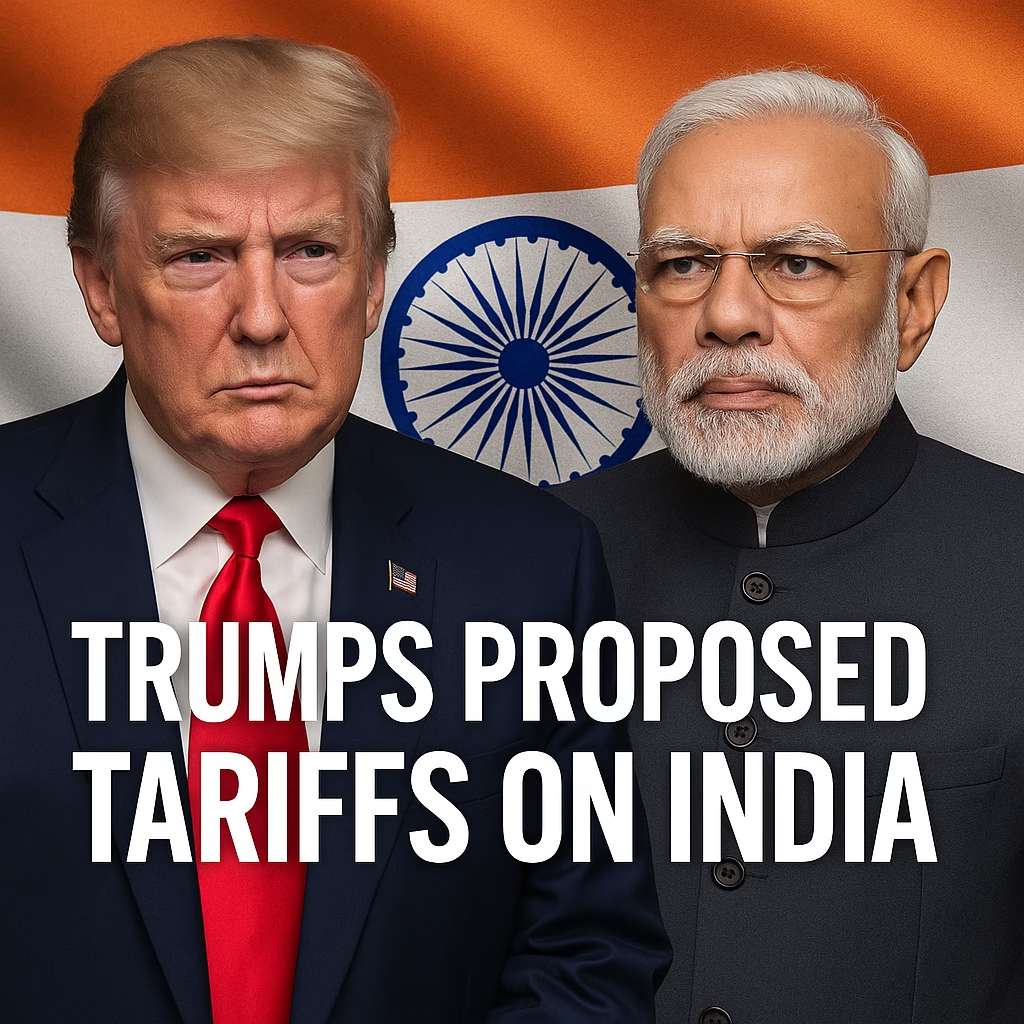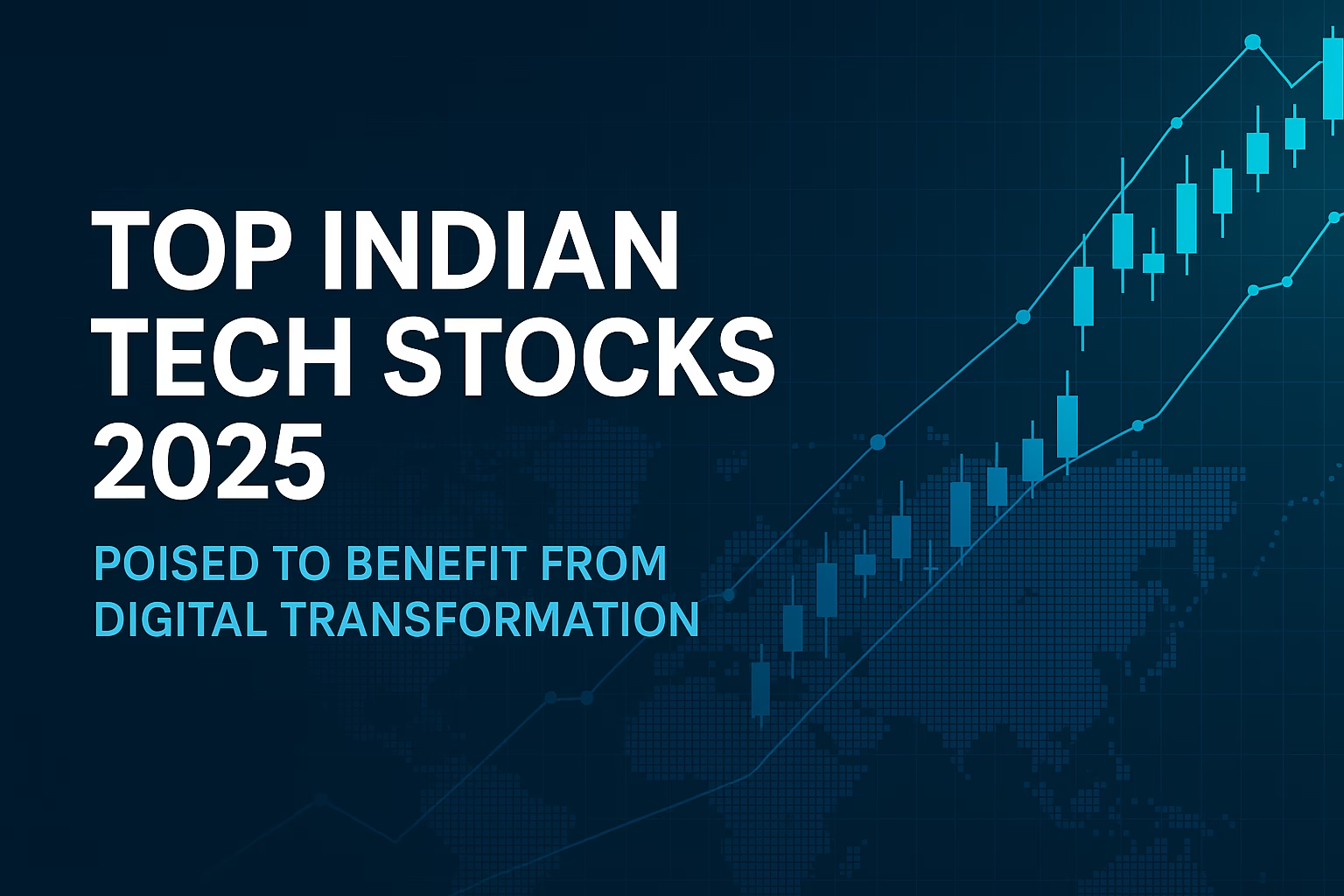Trump’s proposed tariffs on India are making headlines again, and for good reason. The former U.S. president has announced a potential return to his aggressive “America First” trade policy, proposing a 25% tariff on Indian exports to the U.S. This move is not just about trade—it has sparked serious concerns about India’s economy, global trade position, and strategic autonomy.
In this blog post, we break down everything you need to know about Trump’s proposed tariffs on India—how they work, why they matter, and what they could mean for Indian markets.
Click on the picture below to Open Demat account with Zerodha

What Are Trump’s Proposed Tariffs on India?
At the heart of the issue is a new policy called the “Liberation Day” tariff doctrine, announced on April 2, 2025. Under this plan:
All countries will face a 10% base tariff on goods exported to the U.S. Countries with large trade surpluses with the U.S., like India, will face higher country-specific tariffs—in this case, a 25% tariff on all Indian exports starting August 7.
But there’s more. India may also face an additional penalty related to its foreign policy—specifically, its ongoing purchases of Russian oil and defense equipment. This penalty has no fixed rate yet, adding further uncertainty to Indian trade prospects.
Trump has long criticized India’s trade policies, claiming that India’s tariffs are among the highest in the world. His new plan tries to mirror what he sees as unfair practices, creating what he calls a “reciprocal” trade system. India is a key focus, with Trump stating that Indian barriers are too “obnoxious” to ignore.
What Happened Last Time: Lessons from 2017–2021
The last time Trump was in office, he used tariffs to negotiate. Here’s what happened:
- 2018: A 25% tariff on steel and 10% on aluminum affected Indian exports worth billions.
- 2019: India lost its GSP (Generalized System of Preferences) benefits, affecting 1,900+ products.
Both moves had real impacts on Indian industries like steel, auto parts, and small-scale exporters. Analysts say that Trump’s proposed tariffs on India in 2025 follow a similar pattern, possibly as a tactic to push India into negotiations.
How Will Trump’s Proposed Tariffs Affect Indian Economy?
GDP Growth May Slow
Experts are divided:
| Source | GDP Impact |
|---|---|
| Indian Government | 0.2%–0.3% loss |
| ICRA | 0.5%–1% potential hit |
| Barclays | Moderate impact, likely less than 0.5% |
A 25% tariff could reduce Indian exports and hurt GDP growth. Some think the damage could be managed if the tariffs are temporary. But others fear a longer-lasting impact.
When news broke about Trump’s proposed tariffs on India, Indian stock markets dipped sharply. The Nifty and Sensex both opened lower, though they later recovered. Investors are still worried, but many hope the 25% rate is a bluff that will be negotiated down.
The Reserve Bank of India (RBI) may need to support growth by cutting interest rates. But doing so while the U.S. Federal Reserve holds rates high could weaken the Indian Rupee and drive away foreign investors.
Sector-Wise Impact of Trump’s Proposed Tariffs on India
Not every sector will be hit the same way. Here’s a breakdown of the most affected industries:
🔴 Most Vulnerable Sectors
- Textiles & Apparel: Tariffs could jump to 31-34%. U.S. orders are already being delayed or cancelled.
- Gems & Jewellery: Exports worth $10B face new costs. Margins are thin; competition is tough.
- Leather & Footwear: 60% of current U.S. orders may be cancelled. Job losses in Kolkata and Tamil Nadu could be massive.
🟡 Mid-Level Risk Sectors
- Electronics: India is now a top iPhone exporter. But unless exempted, a 25% tariff could hurt growth.
- Pharmaceuticals: India supplies 40% of U.S. generic drugs. Tariffs here would increase healthcare costs in the U.S.—so full enforcement seems unlikely.
🟢 Lower Risk Sectors
Steel & Aluminum: Already under steep duties (50%). However, global oversupply could hurt prices indirectly.
Automobiles: Already facing 25% tariffs from earlier rounds. Might benefit if U.S. shifts sourcing from China.
Strategic Implications of Trump’s Tariff Plan
This is not just about economics—it’s also about geopolitics. The proposed penalty for buying Russian oil shows that Trump may use trade tools to push foreign policy changes. This is a serious challenge to India’s strategic autonomy.
India must now decide whether to:
- Strengthen local manufacturing under the Make in India initiative
- Fight the tariffs at the World Trade Organization (WTO)
- Seek a negotiated settlement
- Diversify its export markets away from the U.S.
The impact of Trump’s proposed tariffs on India could be severe—especially for labor-intensive sectors and small businesses. But there’s still hope that the 25% figure is a negotiation tactic. India must act fast, stay diplomatic, and prepare for all scenarios.
As the world watches this economic chess match, one thing is clear: India’s response to Trump’s proposed tariffs will shape its trade future for years to come.
Disclaimer: The information provided Trump’s proposed tariffs on India in this blog post is for general informational and educational purposes only. While we strive to present accurate and up-to-date analysis, the content does not constitute financial, investment, legal, or professional advice. The opinions expressed are those of the author and may not reflect the views of any government, institution, or agency. Readers are encouraged to consult qualified experts before making any decisions based on this content. Market conditions and political developments are subject to change, and we do not guarantee the accuracy or completeness of any forecasts or predictions mentioned herein.



